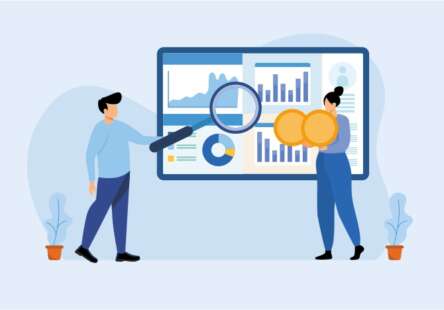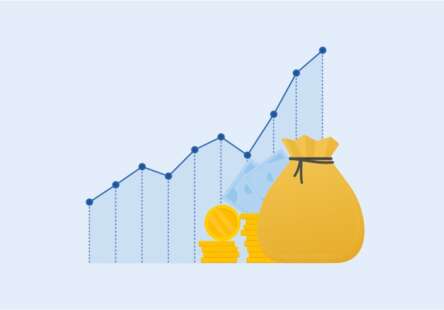What is small business accounting?
Small business accounting is the maintenance of complete and accurate records of all the financial transactions of the company as well as extracting the relevant information from the system when required. This may be easy for the business owner to do when a business is new, but, as the business grows in volume, the volume of financial transactions also increases.
Every business must maintain records that detail all the income, expenses, assets, liabilities, and essential details such as payroll. Additionally, the business must issue bills, invoices, and other documents. Financial reports that are required by government authorities and financial institutions must also be accurately generated and filed. The calculation of taxes and other payments required by government regulation can only be performed accurately when there are complete and accurate records. Business accounting also helps business owners and managers monitor their business’ performance.
At the end of the financial period or financial year, the entire business accounting data is summarized and important financial reports such as the balance sheet, income statement, and cash flow statements are generated. These statements may be necessary for submission to investors and financial institutions.
Elements involved in small business accounting
Assets: Any resources that a business owns that can produce economic value is called an asset. An asset can be tangible or intangible. Tangible assets are physically present and owned by the business, such as the premises, factory, or equipment. Intangible assets do not exist physically but still, have value. Some examples of intangible assets are brand names and intellectual property rights. Assets can be converted into cash, and cash itself is an asset. The company’s assets are all listed on the balance sheet, and they are ordered in the order of how easily they can be liquidated.
Liabilities: Anything the company owes to others is listed as a liability. This includes loans, mortgages, legal obligations, taxes, payroll, accounts payable, and other such accounts. The amounts that the company owes in the short-term such as accounts payable are called current liabilities, and the ones that are not due for more than a year are the long-term or non-current liabilities. Non-current liabilities are usually listed on the balance sheet.
Shareholders’ equity: The money that the owners of a company have invested in the company or that is held by the company’s retained earnings is called the shareholder’s equity. This is inclusive of retained earnings, common shares, and preferred shares. In a private company, it is called owner’s equity. The value of equity is calculated as the money that would be paid to the shareholders or owners if the company were to be liquidated (after settling all liabilities).
Revenues and gains: Revenue is the money that companies make through their primary activities. Gains are the money that the company makes through sources that are not a part of the normal activities. For example, the sale of a capital asset such as property, stocks, or bonds for more than you bought it for is a capital gain.
Expenses and losses: Expenses and losses are two terms that mean very different things. Expenses are the costs that are spent on the activities that generate revenue. Losses are the money that the company loses through an action that is not a part of its primary activity.
Net income: It is also referred to as net earnings. It is calculated as the sales minus the COGS (cost of goods sold), expenses, taxes, and interest. It indicates if the revenue exceeds the company’s income, which is its profitability. It is used to compute the earnings per share or pre-tax earnings.
Operating activities: The primary activities of a company that are performed in order to provide its goods or services are the operating activities. These activities usually keep the company’s cash flow going and are inclusive of manufacturing, marketing, advertising, distribution, etc. The operating activities of the company influence the profitability of the company.
A company can include paying suppliers, paying taxes, receiving payments from goods sold, payroll payments, and such daily activities as their operating activities. Business accounting records show most operational activity-related financial information on the cash flow statement and income statement. Any other activity unrelated to the company’s primary operations, such as the issue of stocks and bonds, etc., are not operational activities.
Investing activities: A business activity such as buying a long-term asset is an investing activity. These assets are usually capitalized after one year. The cash flow statement also shows investing activities as a capital expenditure.
Financing activities: Activities such as debt financing, initial public offerings, secondary offerings, repurchase of shares, cash paid for dividends, etc, are called financing activities and are separate from the operational activities of the company.
How to do accounting for a small business
Open a bank account: The first step to small business accounting is registering the business or company. After this, you would need to open a current account in a bank to store and transact your business’ money. It is always a good practice to keep your business account separate from your personal account to calculate taxes accurately and have a hassle-free business accounting experience. This may also be a requirement legally for certain types of businesses and companies. Even if you are the sole proprietor of your business, your life will be so much easier when you keep your business and personal accounts distinct from each other.
You may also want to set up different accounts for different purposes. For example, your primary business account could be for the daily business activities while another may be used to save the tax payable and other withheld amounts until they are due to be paid. Choose a bank that gives you the maximum benefits at the minimum cost. A bank that has lower charges for a business account is always a good idea. If you do a lot of your business online, extra benefits for online transactions and payments are essential. A net banking interface that is easy to use and seamless integration with card machines are added benefits. The requirements, documentation, and fees vary by bank, so do your groundwork before you open the account.
Have a business software like Tally: A small business can maintain its accounts manually when it starts up. Then as the volume of the transactions goes up, it becomes a hassle to keep up with the recordkeeping. When it is time to file taxes or generate a report, the services of an accountant would be needed. Business management software used at the very beginning is the right way to start. It may be tempting to buy a single module software and then buy other modules later. But, the reentry of data in different systems may be more labor and time-intensive.
An integrated accounting solution such as TallyPrime is ideal for small business accounting. It also works just as well when your company grows. The integrated modules save you time and also allow you to generate accounting reports using all your financial accounting data in one place without data re-entry. Reports for tax filing and other repetitive tasks will be effortless and may not need the services of an accountant. If you are a business owner who is not an expert accountant, TallyPrime also ensures that the transaction entries are entered into the right books of accounts without accounting mistakes.
Set up a payroll system: A small business may have a very minimal payroll. But as the business grows, so will the headcount. You may also need to employ temporary or contract staff for one-time jobs. Payroll software helps you calculate and record payroll and also stay compliant with regulations and taxes. You have a well-organized payroll that is integrated with all the other accounting modules and also updates the other books of accounts that are implicated in a payroll payment.
Investigate import tax: If you are going to import goods or services as a part of your business, understanding the import regulations and taxes applicable is essential. Ensure that all your imports are compliant with the regulations and that the essential documents are prepared in the correct format and manner. TallyPrime helps generate all the required paperwork in physical or digital format as required. It also generates the appropriate taxation calculations and reports.
Determine how you’ll get paid: Collection of payments is an important step in a business. A business that has multiple payment options is more attractive to the customer. Explore the payment options that are available to you both offline and online. Set up your payments so that your customer has the minimum number of steps before payment. Choosing a bank that supports the maximum payment options is an important decision. Negotiate and select payment service providers that offer maximum safety and minimal charges. Customers prefer a payment gateway that they can trust. Small business accounting software that can accurately record multiple payment methods is essential.
Establish sales tax procedures: Computing, collecting, recording, and filing taxes is an ongoing process in a business. Accurately calculating taxes and filing them on time is vital. TallyPrime makes filing taxes effortless by generating the reports in the required formats with all the relevant information extracted from the transaction records. If your business imports or exports goods and services, additional reports and filings will be made.
Determine your tax obligations: The tax obligations that a business is subject to depend on the goods or services that they sell. Get a clear understanding of how much tax you are liable to pay and the tax component of your invoices. This will prevent you from making costly mistakes in the future. Accounting software that lets you analyze your transactions and generate multiple tax analysis reports helps you assess and keep an eye on the tax amount that you are obligated to pay.
Calculate gross margins: Analyzing your accounting data is important to ensure that your company earns as much as it can. Analyze the gross margin that your business is earning with your business accounting data. To calculate this, you must first understand the terms Cost of Goods Sold (COGS) and gross margin. The Cost of Goods Sold (COGS) is the company’s costs to produce the goods for material and labor, and the gross margin is the total sales revenue left after the direct costs incurred to make the product or service.
The formula for gross margin is:
Gross Margin (%) = (Revenue – COGS) / Revenue
So the gross margin is the amount that the business makes after the sale of its goods and services. It is essential to make a gross margin that is large enough to keep your business in good financial health and turn a profit.
Periodically re-evaluate your methods: The accounting methods you use should be assessed periodically to determine if it is the right match for your business. If you are having to continually transfer data, re-enter data or manually generate and edit forms, you may need a better option. TallyPrime is integrated so that there is no data reentry at all. The reports generated are fully compliant with the official requirements and need no rework. The time saved is equal to money saved for the business. The time saved by using an intelligent accounting system is better used in business activities. Good bookkeeping also keeps your business fully compliant with the legal requirements.



